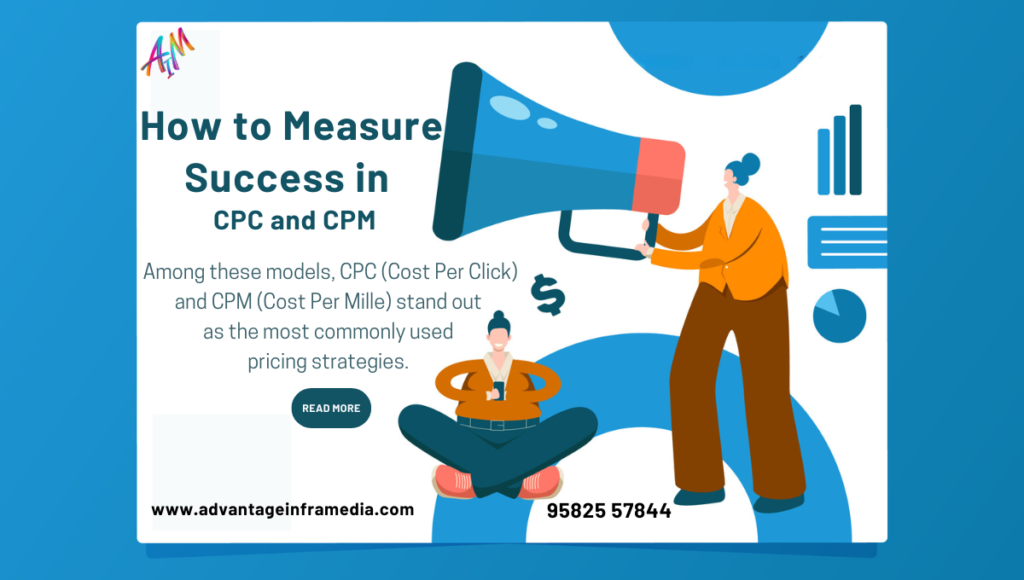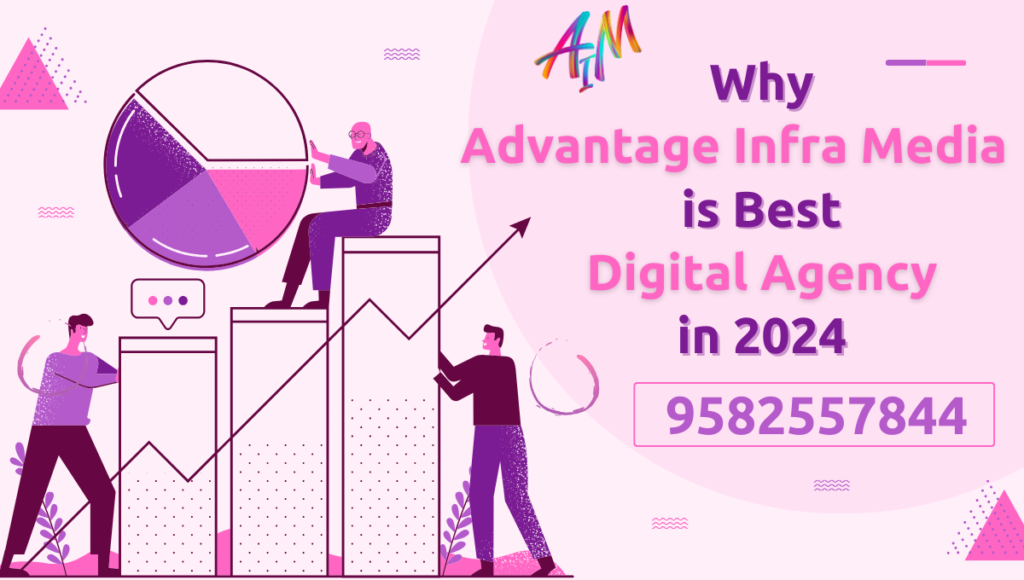Introduction
Overview of Digital Advertising Models
-
- Importance in modern marketing strategies.
- Brief introduction to CPC and CPM.
- Why understanding these models is crucial for advertisers.
What is CPC (Cost Per Click)?
Definition and Explanation
-
- How CPC works.
- Historical context and evolution of the CPC model.
- Key players in the CPC landscape (e.g., Google Ads, Facebook Ads).
Mechanics of CPC
-
- Bidding process.
- Determining the actual CPC.
- Role of Quality Score (in platforms like Google Ads).
Advantages of CPC
-
- Cost efficiency for direct response campaigns.
- Control over ad spend.
- Measurability and ROI.
Challenges and Limitations
-
- Potential for click fraud.
- Variability in click quality.
- Competition and high costs in certain industries.
What is CPM (Cost Per Mille)?
Definition and Explanation
-
- How CPM works.
- Historical context and the rise of impression-based advertising.
- Key players in the CPM landscape (e.g., display networks, social media platforms).
Mechanics of CPM
-
- Understanding impressions.
- How CPM is calculated.
- The role of viewability and ad placement.
Advantages of CPM
-
- Ideal for brand awareness campaigns.
- Consistent exposure to target audiences.
- Typically lower costs compared to CPC.
Challenges and Limitations
-
- Difficulty in measuring direct response.
- Potential wastage of impressions.
- Less control over costs for high-traffic campaigns.
Strategic Applications of CPC and CPM
When to Use CPC
-
- Best scenarios for CPC campaigns.
- Examples of effective CPC campaign strategies.
- Case studies illustrating successful CPC campaigns.
When to Use CPM
-
- Best scenarios for CPM campaigns.
- Examples of effective CPM campaign strategies.
- Case studies illustrating successful CPM campaigns.
Comparing CPC and CPM
Cost Efficiency
-
- Which model is more cost-effective for different objectives?
- Analysis of cost implications for small vs. large businesses.
Performance Metrics
-
- Key performance indicators for CPC and CPM.
- How to measure success for each model.
- Tools and platforms for tracking CPC and CPM metrics.
Audience Targeting
-
- How each model caters to audience targeting.
- Role of demographic, behavioral, and contextual targeting.
Integration of CPC and CPM in a Holistic Marketing Strategy
Blending CPC and CPM
-
- Strategies for combining CPC and CPM in multi-channel campaigns.
- Benefits of a hybrid approach.
- Examples of integrated campaigns using both models.
Budget Allocation
-
- How to allocate budget between CPC and CPM.
- Factors influencing budget decisions.
- Tips for optimizing budget use across both models.
Future Trends in CPC and CPM
Emerging Technologies and Innovations
-
- Impact of AI and machine learning on CPC and CPM.
- Programmatic advertising and its influence on cost models.
- Trends in user behavior and their implications.
Evolving Platforms and Market Dynamics
-
- Changes in major advertising platforms (Google, Facebook, etc.).
- How new regulations (e.g., data privacy laws) affect CPC and CPM.
- The future of digital advertising pricing models.
Practical Tips for Maximizing CPC and CPM Campaigns
Optimization Techniques for CPC
-
- Tips for reducing CPC.
- How to improve ad relevance and Quality Score.
- Best practices for A/B testing and ad optimization.
Optimization Techniques for CPM
-
- Tips for maximizing CPM value.
- How to improve ad viewability and engagement.
- Best practices for creative design and placement.
Common Misconceptions and FAQs
Clarifying Myths about CPC and CPM
-
- Addressing common misunderstandings.
- FAQs and clear explanations.
Real-World Examples and Expert Insights
-
- Insights from industry experts.
- Examples from real campaigns and their outcomes.
Conclusion
Recap of Key Points
-
- Summary of CPC and CPM models.
- Key takeaways for advertisers.
Final Thoughts
-
- The importance of choosing the right model for your goals.
- Encouragement to experiment and adapt strategies.
- Closing remarks on the evolving landscape of digital advertising.
Introduction
Digital advertising has revolutionized the way businesses reach their audiences, offering a plethora of models to optimize spending and maximize impact. Among these models, CPC (Cost Per Click) and CPM (Cost Per Mille) stand out as the most commonly used pricing strategies. This blog will delve into the intricacies of both CPC and CPM, exploring their definitions, mechanics, advantages, challenges, and strategic applications. Understanding these models is crucial for any advertiser aiming to harness the full potential of digital advertising.
What is CPC (Cost Per Click)?
Definition and Explanation
CPC, or Cost Per Click, is a performance-based advertising model where advertisers pay a fee each time their ad is clicked. This model is particularly popular in search engine advertising and pay-per-click (PPC) campaigns. It allows advertisers to control their spending and directly measure the return on investment (ROI) of their campaigns.
The CPC model has evolved significantly since its inception. Originally popularized by search engines like Google, it has expanded to various platforms including social media and display networks. Today, CPC is a cornerstone of online advertising, used by businesses of all sizes to drive traffic and conversions.
Mechanics of CPC
In a CPC campaign, advertisers bid on specific keywords or placements. The amount they are willing to pay per click influences the ad’s position and visibility. However, the actual cost per click is often determined by a combination of the advertiser’s bid, the quality of the ad, and the competition.
For example, in Google Ads, the final CPC is influenced by the Quality Score, which is a metric that reflects the relevance and quality of the ad in relation to the keywords. A higher Quality Score can lead to a lower CPC, even if the bid is lower than competitors.
Advantages of CPC
- Cost Efficiency for Direct Response Campaigns: CPC is ideal for campaigns focused on driving specific actions, such as website visits or purchases. Advertisers only pay when a user shows genuine interest by clicking on the ad.
- Control Over Ad Spend: With CPC, advertisers have granular control over their budget, ensuring they pay only for the interactions they value most.
- Measurability and ROI: CPC campaigns provide clear metrics for measuring success, making it easier to calculate ROI and optimize performance.
Challenges and Limitations
- Potential for Click Fraud: CPC campaigns can be susceptible to fraudulent clicks, where bots or malicious actors click on ads to drain the advertiser’s budget without genuine interest.
- Variability in Click Quality: Not all clicks are equal. Some may come from users who quickly bounce off the site, leading to wasted spend.
- Competition and High Costs in Certain Industries: In competitive industries, CPC can become expensive as advertisers bid higher amounts to secure top positions.
What is CPM (Cost Per Mille)?
Definition and Explanation
CPM, or Cost Per Mille, is an advertising model where advertisers pay for every thousand impressions (views) of their ad. This model is commonly used in display advertising and is ideal for campaigns focused on brand awareness and reach.
Impressions refer to the number of times an ad is displayed to users, regardless of whether they interact with it. CPM pricing is calculated by dividing the total cost of the campaign by the number of impressions (in thousands).
Mechanics of CPM
In a CPM campaign, advertisers are charged a fixed rate for every thousand times their ad is shown. The focus is on maximizing visibility rather than direct interactions. CPM is typically used in display and video advertising, where the goal is to reach a large audience with a compelling message.
Viewability plays a critical role in CPM campaigns. Advertisers seek placements where their ads are more likely to be seen and engaged with, rather than just served. This has led to the development of metrics like viewable CPM (vCPM), which only charges for impressions that are actually viewable by the user.
Advantages of CPM
- Ideal for Brand Awareness Campaigns: CPM is effective for campaigns aimed at building brand recognition and reaching a broad audience.
- Consistent Exposure to Target Audiences: CPM ensures that ads are displayed to a large number of users, increasing the chances of brand recall and engagement.
- Typically Lower Costs Compared to CPC: CPM campaigns often have lower costs per thousand impressions, making them attractive for advertisers looking to maximize reach.
Challenges and Limitations
- Difficulty in Measuring Direct Response: CPM campaigns do not directly measure user interactions, making it harder to assess their impact on conversions.
- Potential Wastage of Impressions: Ads may be shown to users who are not interested or likely to engage, leading to wasted impressions.
- Less Control Over Costs for High-Traffic Campaigns: For campaigns with high traffic volumes, CPM can become costly as the number of impressions increases.
Strategic Applications of CPC and CPM
When to Use CPC
CPC is best suited for campaigns with specific performance goals, such as driving website traffic, generating leads, or promoting direct sales. It is particularly effective in the following scenarios:
- Search Advertising: CPC is the primary model for search ads, where users are actively searching for products or services.
- Remarketing Campaigns: CPC can be used to target users who have previously interacted with a brand, encouraging them to return and complete a desired action.
- Product Launches and Promotions: CPC allows advertisers to drive immediate traffic and interest to new products or special offers.
Examples of Effective CPC Campaign Strategies
- Keyword Targeting: Selecting high-intent keywords that match the user’s search queries to drive qualified traffic.
- Ad Copy Optimization: Crafting compelling ad copy that encourages clicks and conversions.
- Landing Page Optimization: Ensuring that the landing page matches the ad’s promise and provides a seamless user experience.
Case Studies Illustrating Successful CPC Campaigns
- E-commerce Success: An online retailer used targeted CPC ads to drive traffic to a flash sale, resulting in a significant increase in sales and a positive ROI.
- Lead Generation for B2B: A B2B company implemented a CPC campaign to capture leads for a whitepaper download, achieving a high conversion rate and low cost per lead.
When to Use CPM
CPM is ideal for campaigns focused on increasing brand visibility and reaching a wide audience. It is particularly effective in the following scenarios:
- Display Advertising: CPM is commonly used for banner ads and display networks, where the goal is to create broad awareness.
- Video Advertising: CPM is suitable for video ads, especially for campaigns aiming to deliver a powerful brand message.
- Event Promotions and Sponsorships: CPM can be used to promote events or sponsorships, ensuring maximum exposure to target audiences.
Examples of Effective CPM Campaign Strategies
- Audience Targeting: Using demographic and interest-based targeting to reach the right audience segments.
- Creative Design and Messaging: Developing visually appealing and engaging ad creatives that capture attention and communicate the brand message.
- Placement Optimization: Selecting premium ad placements that enhance viewability and engagement.
Case Studies Illustrating Successful CPM Campaigns
- Brand Awareness for FMCG: A consumer goods company used CPM ads to launch a new product, achieving high visibility and brand recall among target consumers.
- Event Promotion for Entertainment: An entertainment company ran CPM campaigns to promote a major event, resulting in increased ticket sales and attendance.
Comparing CPC and CPM
Cost Efficiency
When comparing cost efficiency, CPC and CPM have distinct advantages depending on the campaign’s objectives. CPC is more cost-effective for direct response campaigns where the goal is to drive specific actions, as advertisers only pay for clicks. CPM, on the other hand, can be more cost-effective for brand awareness campaigns, where the goal is to maximize exposure at a lower cost per thousand impressions.
Performance Metrics
Both CPC and CPM have unique performance metrics that measure their success. CPC campaigns focus on metrics like click-through rate (CTR), cost per conversion, and ROI. CPM campaigns, however, emphasize metrics such as impressions, reach, and frequency. Tools like Google Analytics and Facebook Ads Manager provide comprehensive tracking and reporting for both models.
Audience Targeting
CPC and CPM cater to audience targeting in different ways. CPC campaigns often use keyword targeting and intent signals to reach users actively searching for specific products or services. CPM campaigns, on the other hand, rely on demographic, behavioral, and contextual targeting to reach a broader audience. This allows advertisers to tailor their messaging to different segments and maximize impact.
Integration of CPC and CPM in a Holistic Marketing Strategy
Blending CPC and CPM
Combining CPC and CPM in a single campaign can create a powerful synergy, leveraging the strengths of both models. For instance, a brand might use CPM ads to build awareness and then retarget interested users with CPC ads to drive conversions. This approach ensures that the campaign reaches a wide audience while also capturing and converting high-intent users.
Benefits of a Hybrid Approach
A hybrid approach to CPC and CPM can offer several benefits, including:
- Enhanced Reach and Engagement: Combining CPM for broad reach and CPC for targeted engagement ensures a comprehensive approach to advertising.
- Optimized Budget Allocation: Allocating budget across both models can help balance costs and maximize ROI.
- Improved Campaign Performance: Using both CPC and CPM allows for better tracking and optimization of campaign performance.
Examples of Integrated Campaigns Using Both Models
- Product Launch Campaign: A company launches a new product with CPM ads to build awareness and follows up with CPC ads to drive traffic and sales.
- Event Promotion: An event organizer uses CPM ads to promote an upcoming event and CPC ads to sell tickets and registrations.
Budget Allocation
Allocating budget between CPC and CPM requires careful consideration of campaign goals, audience, and available resources. Advertisers should:
- Assess Campaign Objectives: Determine whether the primary goal is to drive direct actions or increase brand visibility.
- Analyze Audience Behavior: Understand how the target audience interacts with ads and which model is more likely to achieve the desired outcomes.
- Evaluate Platform Performance: Analyze the performance of CPC and CPM campaigns on different platforms and allocate budget accordingly.
Future Trends in CPC and CPM
Emerging Technologies and Innovations
The future of CPC and CPM is being shaped by emerging technologies and innovations. Artificial intelligence (AI) and machine learning are revolutionizing how ads are targeted, optimized, and measured. Programmatic advertising, which automates the buying and selling of ad inventory, is also transforming the landscape of digital advertising pricing models.
Impact of AI and Machine Learning on CPC and CPM
AI and machine learning algorithms can analyze vast amounts of data to optimize CPC and CPM campaigns in real-time. They can predict user behavior, adjust bids, and enhance ad targeting to improve performance and ROI. As these technologies continue to evolve, they will play a critical role in shaping the future of digital advertising.
Programmatic Advertising and Its Influence on Cost Models
Programmatic advertising automates the buying and selling of ad inventory, making it more efficient and effective. It allows advertisers to reach their target audience with precision and at scale. Programmatic platforms use real-time bidding (RTB) to determine the cost of impressions, blending elements of both CPC and CPM models. This approach offers greater flexibility and control over ad spend.
Trends in User Behavior and Their Implications
Changes in user behavior, such as increased mobile usage and the rise of voice search, are also influencing the future of CPC and CPM. Advertisers need to adapt their strategies to meet the evolving preferences and habits of their audience. Understanding these trends and their implications will be key to staying competitive in the digital advertising landscape.
Practical Tips for Maximizing CPC and CPM Campaigns
Optimization Techniques for CPC
- Reducing CPC: Implementing strategies like bid adjustments, Quality Score improvements, and keyword optimization can help reduce CPC and improve campaign efficiency.
- Improving Ad Relevance and Quality Score: Creating highly relevant and engaging ads can boost Quality Score and lower CPC. Advertisers should focus on matching ad copy to the user’s intent and landing page content.
- Best Practices for A/B Testing and Ad Optimization: Regularly testing different ad variations and optimizing based on performance data is crucial for maximizing the effectiveness of CPC campaigns.
Optimization Techniques for CPM
- Maximizing CPM Value: Enhancing ad viewability, selecting premium placements, and targeting high-value audiences can help maximize the value of CPM campaigns.
- Improving Ad Viewability and Engagement: Ensuring that ads are placed in viewable areas and designed to capture attention can improve engagement and reduce wastage of impressions.
- Best Practices for Creative Design and Placement: Developing visually appealing and relevant ad creatives, and strategically placing them in high-traffic areas, can enhance the performance of CPM campaigns.
Common Misconceptions and FAQs
Clarifying Myths about CPC and CPM
- Myth: CPC is always more cost-effective than CPM.
- Reality: The cost-effectiveness of CPC and CPM depends on the campaign’s goals and the advertiser’s strategy. CPC is cost-effective for direct response, while CPM is better for brand awareness.
- Myth: CPM campaigns are only for large brands.
- Reality: CPM can be effective for businesses of all sizes, especially when targeting niche audiences or promoting specific events.
FAQs and Clear Explanations
-
What is the difference between CPC and PPC?
- CPC (Cost Per Click) refers to the amount paid for each click on an ad, while PPC (Pay Per Click) is a broader term that includes any advertising model where payment is based on clicks.
-
How do I choose between CPC and CPM for my campaign?
- Consider your campaign goals. If you want to drive specific actions, choose CPC. If your goal is to increase brand awareness, choose CPM.
-
Can I use both CPC and CPM in a single campaign?
- Yes, combining CPC and CPM can create a balanced approach that leverages the strengths of both models.
Real-World Examples and Expert Insights
Including insights from industry experts and real-world examples can provide valuable context and practical advice for advertisers looking to optimize their CPC and CPM campaigns. Highlighting successful strategies and outcomes can inspire readers to apply similar approaches in their own campaigns.
Conclusion
Recap of Key Points
- CPC and CPM are fundamental pricing models in digital advertising, each with its own advantages and challenges.
- Understanding when and how to use each model is crucial for maximizing campaign performance and ROI.
Final Thoughts
Choosing the right model for your advertising goals is essential. Whether you aim to drive direct actions with CPC or increase brand visibility with CPM, understanding the intricacies of each model will help you make informed decisions and achieve your objectives. As the digital advertising landscape continues to evolve, staying informed and adaptable will be key to maintaining a competitive edge.
Closing Remarks on the Evolving Landscape of Digital Advertising
Digital advertising is constantly changing, driven by technological advancements and shifts in user behavior. Advertisers must remain agile and open to experimenting with different models and strategies. By leveraging the strengths of both CPC and CPM, businesses can create impactful campaigns that resonate with their target audiences and drive meaningful results.




